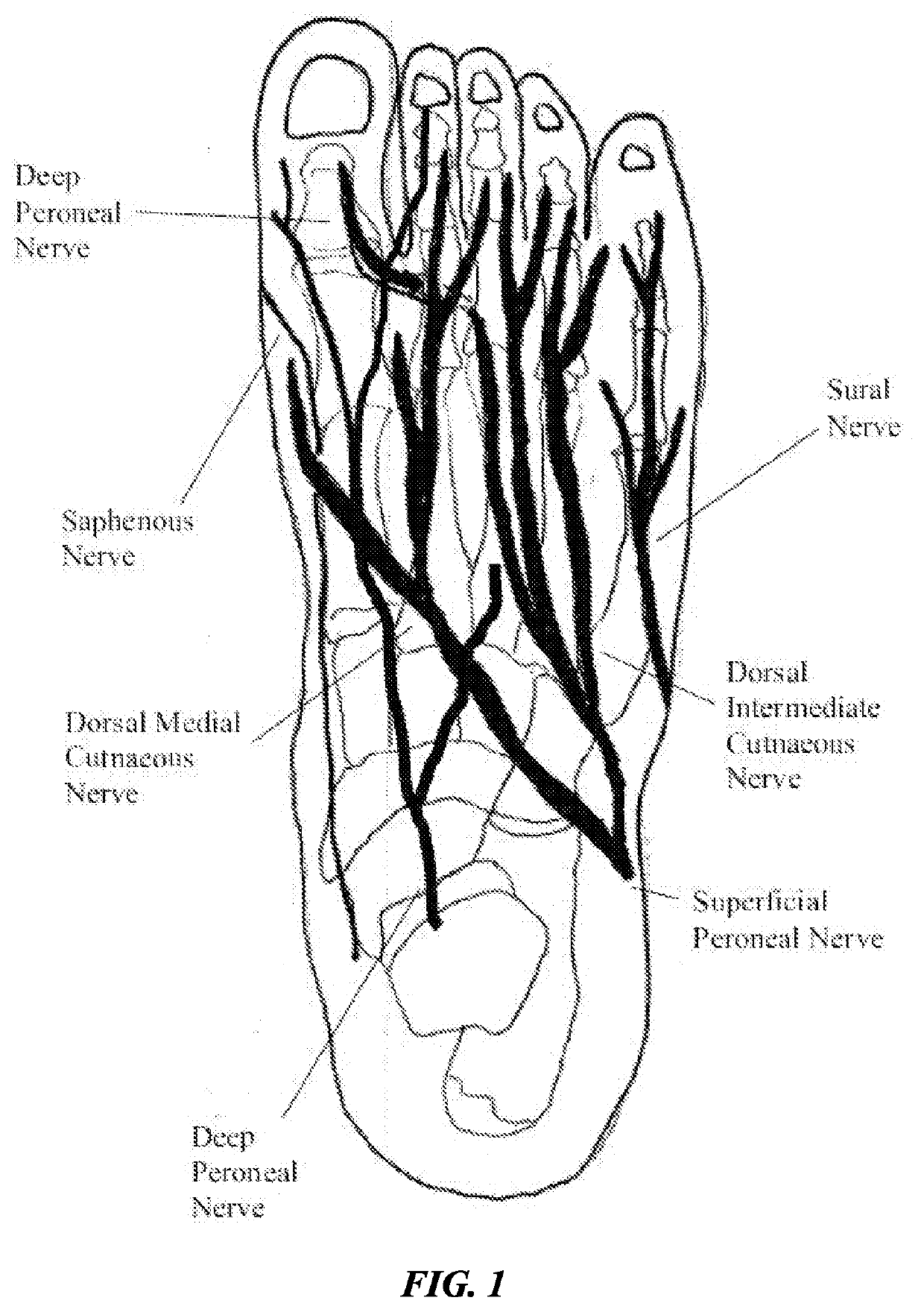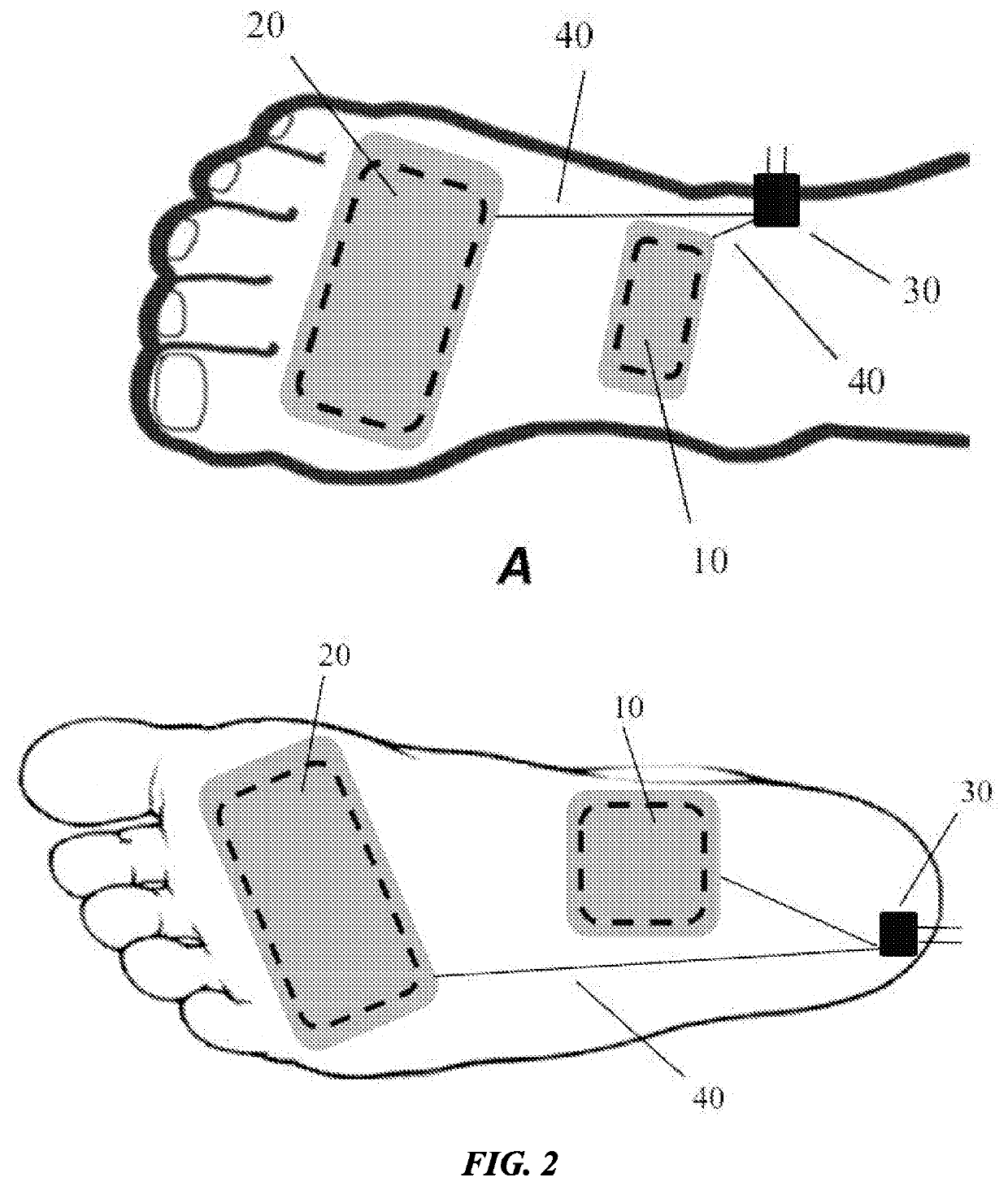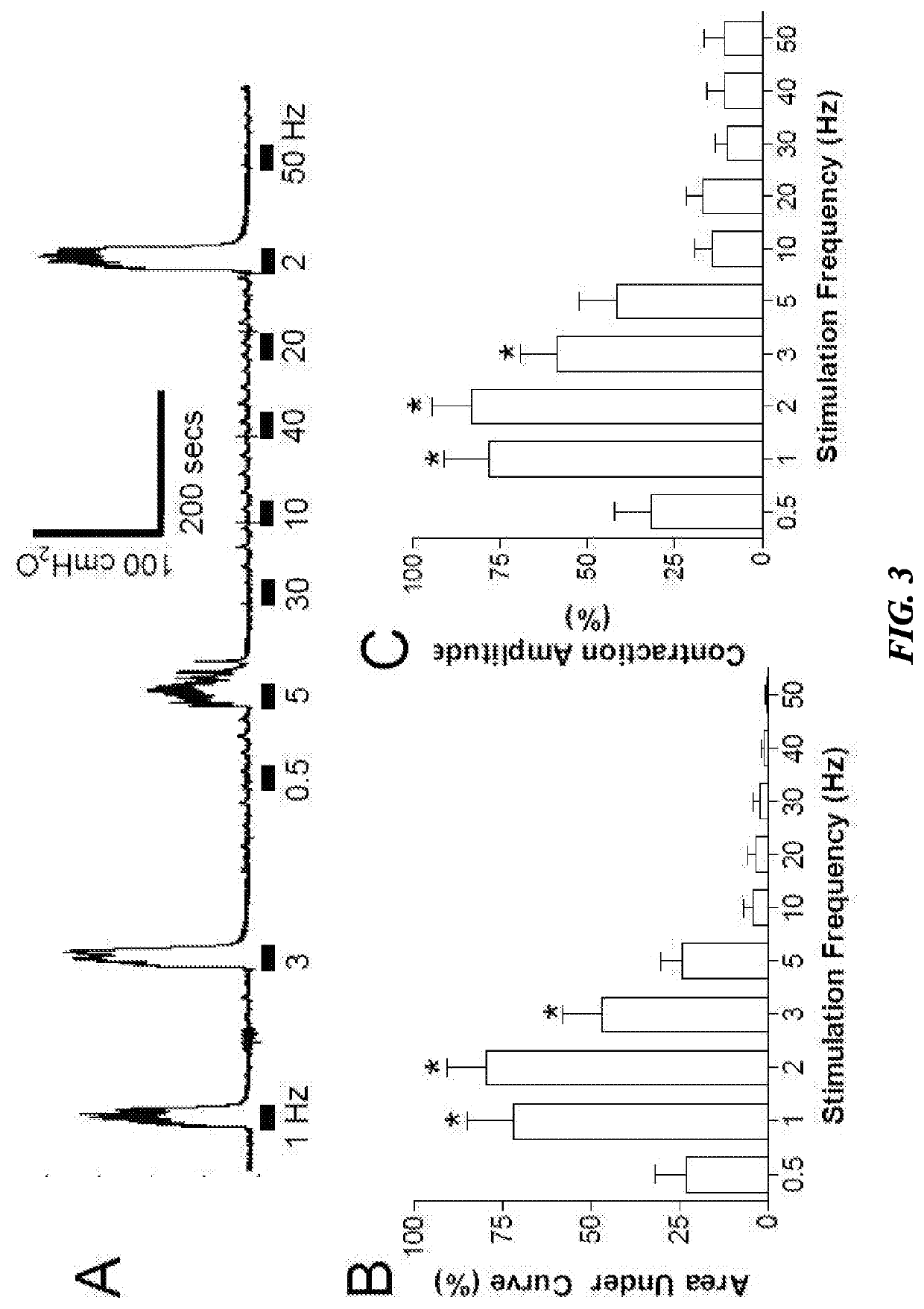Peripheral Neuromodulation to Treat Bladder and Bowel Dysfunction
a neuromodulation and peripheral technology, applied in the field of physiological disorders treated using electrical stimulation, can solve the problems of the majority of uab patients untreated
- Summary
- Abstract
- Description
- Claims
- Application Information
AI Technical Summary
Benefits of technology
Problems solved by technology
Method used
Image
Examples
example 1
Peroneal Nerve Stimulation
[0071]In the present experiments it was discovered that electrical stimulation of the superficial peroneal nerve, which innervates the dorsal surface of the foot, elicits excitatory effects on the bladder and reverses prolonged tibial nerve stimulation-induced inhibition of contractions (TNS). These observations raise the possibility that the excitatory peroneal-to-bladder reflex might be utilized in clinical applications to enhance bladder contractions and treat UAB or non-obstructive urinary retention (NOUR).
Materials and Methods
[0072]The experimental protocol and animal use in this study were approved by the Animal Care and Use Committee at the University of Pittsburgh.
[0073]A total of 10 cats (7 male and 3 female, 2.9-4.2 kg; Liberty Research, Waverly, N.Y.) were used in this study. The animals were anesthetized with isoflurane (2-5% in oxygen) during surgery and then switched to α-chloralose anesthesia (initial 65 mg / kg i.v. and supplemented as needed)...
example 2
Saphenous Nerve Stimulation
Methods
[0094]The experimental protocol and animal use in this study were approved by the Animal Care and Use Committee at the University of Pittsburgh.
[0095]A total of 6 cats (3 males and 3 females, 3-4.3 kg; Liberty Research, Waverly, N.Y.) were used in this study. The animals were anesthetized with isoflurane (2-5% in oxygen) during surgery and then switched to a-chloralose anesthesia (initial 65 mg / kg i.v. and supplemented as needed) during data collection. The left cephalic vein was catheterized for administration of anesthetics and fluid. A tracheotomy was performed and a tube was inserted to keep the airway patent. A catheter was inserted into the right carotid artery to monitor systemic blood pressure. Heart rate and blood oxygen were monitored by a pulse oximeter (9847V; NONIN Medical, Plymouth, Minn.) attached to the tongue. Through an abdominal incision, the ureters were isolated, tied, and cut for external drainage. A double lumen catheter was i...
example 3
Tibial Nerve Stimulation
Methods
[0104]The experimental protocol and animal use in this study were approved by the Animal Care and Use Committee at the University of Pittsburgh.
[0105]A total of 10 cats (5 male and 5 female, 2.6-4.2 kg; Liberty Research, Waverly, N.Y.) were used in this study. The animals were anesthetized with isoflurane (2-5% in oxygen) during surgery and then switched to a-chloralose anesthesia (initial 65 mg / kg intravenous and supplemented as needed) during data collection. Left cephalic vein was catheterized for administration of anesthetics and fluid. A tracheotomy was performed and a tube was inserted to keep the airway patent. A catheter was inserted into right carotid artery to monitor systemic blood pressure. Heart rate and blood oxygen were monitored by a pulse oximeter (9847V; NONIN Medical, Plymouth, Minn.) attached to the tongue. Through an abdominal incision, the ureters were isolated, tied, and cut for external drainage. A double lumen catheter was inse...
PUM
 Login to View More
Login to View More Abstract
Description
Claims
Application Information
 Login to View More
Login to View More - R&D
- Intellectual Property
- Life Sciences
- Materials
- Tech Scout
- Unparalleled Data Quality
- Higher Quality Content
- 60% Fewer Hallucinations
Browse by: Latest US Patents, China's latest patents, Technical Efficacy Thesaurus, Application Domain, Technology Topic, Popular Technical Reports.
© 2025 PatSnap. All rights reserved.Legal|Privacy policy|Modern Slavery Act Transparency Statement|Sitemap|About US| Contact US: help@patsnap.com



